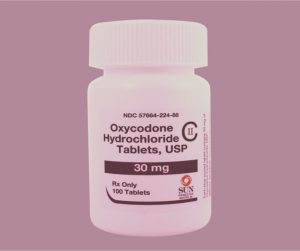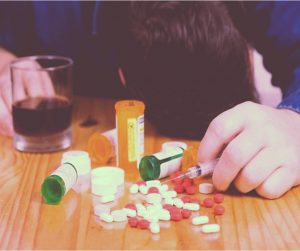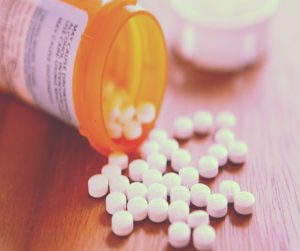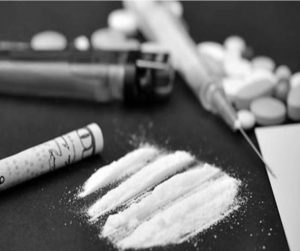In this present time, we can see more mothers getting addicted to drugs. What makes this situation extra difficult is the fact that there are children and a family that gets affected. Drug addiction can harm a person and others in so many ways, not to mention the health consequences that one has to go through. But above it all, what is more important is when one decides to change for the better. This what happened to a mom who finally was able to free herself from the grip of addiction.  It is Christmas Eve four years ago and a baby is coming into this world with a mother who some would condemn as so awful that her tiny girl should be immediately taken away. Mom’s record includes a long string of narcotics arrests, six children by multiple fathers, tattoos that would make a Marine blush and a methamphetamine habit that started when Mom was 18 years old. Click here for more information. "But baby Jade should stay with Mom, her case worker firmly believes. In her bones, Los Angeles County social worker LaVonda Scott is convinced that this very special night marks a turning point. But it’s not all about hope and faith. Armed with a master’s degree in social work and 15 years experience, Scott believes Mom has finally gotten control of her demons. Flash forward to last week, the day after Thanksgiving. Jade, now just a few weeks shy of four, climbs up on a couch in a low-income housing project in Anaheim. Lola, a chihuahua and Jack Russell mix, skitters across the the floor, leaps up and settles next to the little girl."
It is Christmas Eve four years ago and a baby is coming into this world with a mother who some would condemn as so awful that her tiny girl should be immediately taken away. Mom’s record includes a long string of narcotics arrests, six children by multiple fathers, tattoos that would make a Marine blush and a methamphetamine habit that started when Mom was 18 years old. Click here for more information. "But baby Jade should stay with Mom, her case worker firmly believes. In her bones, Los Angeles County social worker LaVonda Scott is convinced that this very special night marks a turning point. But it’s not all about hope and faith. Armed with a master’s degree in social work and 15 years experience, Scott believes Mom has finally gotten control of her demons. Flash forward to last week, the day after Thanksgiving. Jade, now just a few weeks shy of four, climbs up on a couch in a low-income housing project in Anaheim. Lola, a chihuahua and Jack Russell mix, skitters across the the floor, leaps up and settles next to the little girl."
Mom finally frees herself from grip of drug addiction is available on www.rehabnear.me
from
https://www.rehabnear.me/mom-finally-frees-herself-from-grip-of-drug-addiction/







 o: they are quite different. But the two drugs have similarities that make them comparable.
o: they are quite different. But the two drugs have similarities that make them comparable. In Egypt, some drug dealers even posed as doctors. The last thing that visitors of two “medical centers” in Egypt’s Alexandria expected was for the doctors treating them from their
In Egypt, some drug dealers even posed as doctors. The last thing that visitors of two “medical centers” in Egypt’s Alexandria expected was for the doctors treating them from their 
 Comedian Artie Lange, who has
Comedian Artie Lange, who has 
 ddiction then you may be wondering how you can ever escape from the cycle that you are caught in. Every time that you try to walk away from the pills you go through terrible withdrawals that drive you crazy, to the point that you are driven to seek out more medication in order to get rid of the terrible withdrawal symptoms. Click the
ddiction then you may be wondering how you can ever escape from the cycle that you are caught in. Every time that you try to walk away from the pills you go through terrible withdrawals that drive you crazy, to the point that you are driven to seek out more medication in order to get rid of the terrible withdrawal symptoms. Click the  The siren call of addictive drugs can be hard to resist, and returning to the environment where drugs were previously taken can make resistance that much harder. However, addicts who exercise appear to be less vulnerable to the impact of these environmental cues. Now, research with mice suggests that exercise might strengthen a drug user's resolve by altering the production of peptides in the brain, according to a study in the journal ACS Omega. Click
The siren call of addictive drugs can be hard to resist, and returning to the environment where drugs were previously taken can make resistance that much harder. However, addicts who exercise appear to be less vulnerable to the impact of these environmental cues. Now, research with mice suggests that exercise might strengthen a drug user's resolve by altering the production of peptides in the brain, according to a study in the journal ACS Omega. Click 
 In 2016, there were 54 drug overdose deaths in North Dakota. While North Dakota is doing better compared to the nation as a whole, the rise in deaths since 2014 is alarming. Our Malique Rankin spoke to a teen who is a recovering addict; working every day to stay sober. Audrey Snyder; 19-year-old: "Now I'm 19. And I have felonies and I can't go back. I can't go change the past, but all I can do is move forward." Her story starts at age 12 when she began smoking pot, but the drug use didn't end there. Click
In 2016, there were 54 drug overdose deaths in North Dakota. While North Dakota is doing better compared to the nation as a whole, the rise in deaths since 2014 is alarming. Our Malique Rankin spoke to a teen who is a recovering addict; working every day to stay sober. Audrey Snyder; 19-year-old: "Now I'm 19. And I have felonies and I can't go back. I can't go change the past, but all I can do is move forward." Her story starts at age 12 when she began smoking pot, but the drug use didn't end there. Click 
 In Ohio, an addiction recovery treatment bill has been passed. This bill is meant to provide easier access to drug addiction recovery treatment, sponsored by Ohio House Representative Jay Edwards (R-Nelsonville), was approved unanimously across party lines by the Ohio House on Wednesday. House Bill 167, known as Daniel’s Law, allows pharmacists to dispense, and even administer, an emergency refill of naltrexone, known by its brand name Vivitrol, under “limited circumstances,” according to a release from Edwards’ office. Click
In Ohio, an addiction recovery treatment bill has been passed. This bill is meant to provide easier access to drug addiction recovery treatment, sponsored by Ohio House Representative Jay Edwards (R-Nelsonville), was approved unanimously across party lines by the Ohio House on Wednesday. House Bill 167, known as Daniel’s Law, allows pharmacists to dispense, and even administer, an emergency refill of naltrexone, known by its brand name Vivitrol, under “limited circumstances,” according to a release from Edwards’ office. Click 
 This is what happened in Leavenworth County, only that the delivered man was caught while trying to do his business. Charles Newsome, a 56-year-old from Lansing, was sentenced on Friday after being convicted of one count of trafficking contraband into a correctional facility. The Leavenworth County Attorney’s Office filed charges after Newsome, who was working for a business that delivers items into the prison in April 2016, was found with almost 200 grams of
This is what happened in Leavenworth County, only that the delivered man was caught while trying to do his business. Charles Newsome, a 56-year-old from Lansing, was sentenced on Friday after being convicted of one count of trafficking contraband into a correctional facility. The Leavenworth County Attorney’s Office filed charges after Newsome, who was working for a business that delivers items into the prison in April 2016, was found with almost 200 grams of 